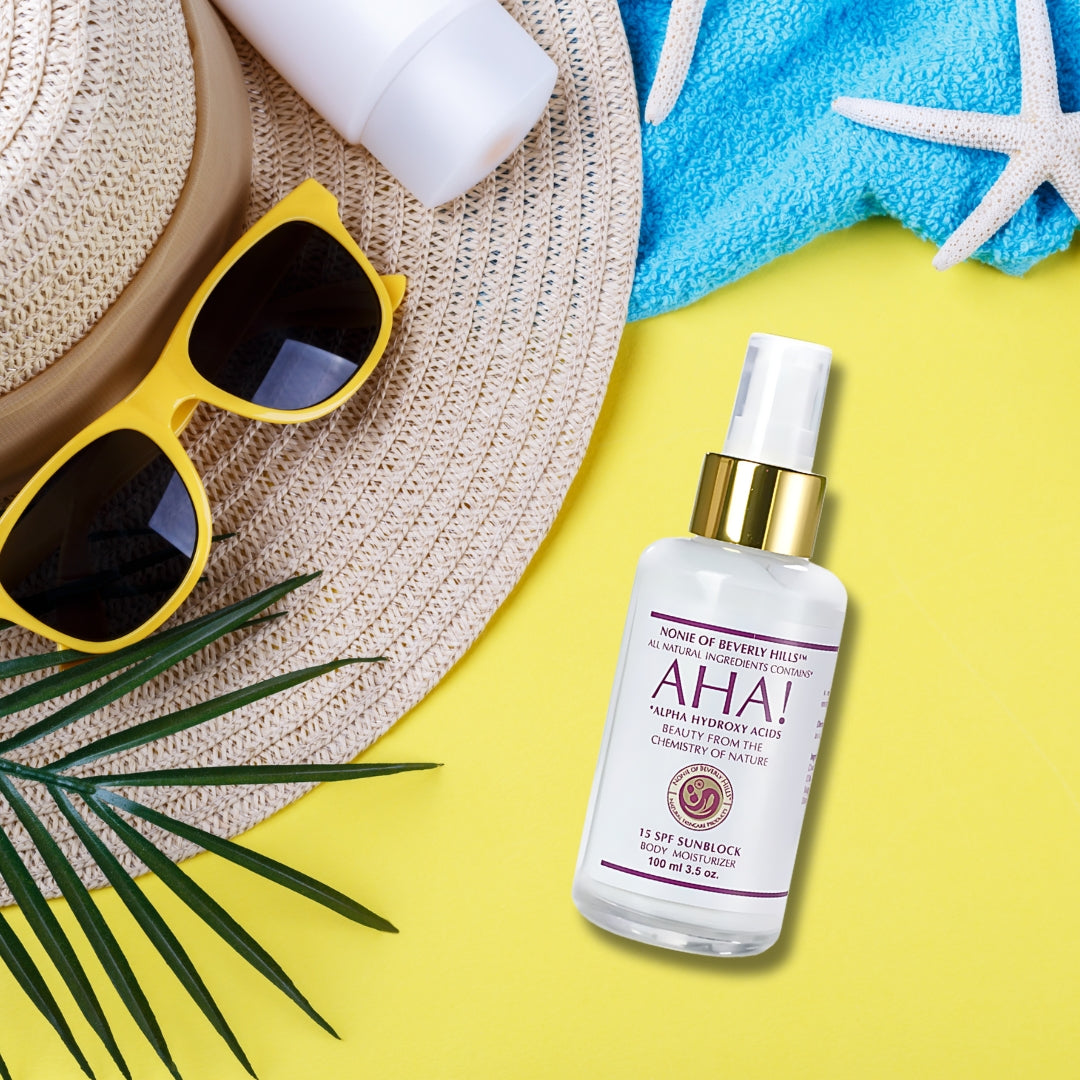
The Hostilities of Summer and the Essentiality of Sunblock
Share
Summer is a season synonymous with warmth, freedom, and an array of outdoor activities. Yet, beneath its sunny allure, summer harbors a host of challenges, particularly related to the sun’s relentless UV rays. This blog delves into the hostilities of summer and underscores the importance of sunblock in maintaining skin health.
The Hostilities of Summer
-
Intense UV Radiation: Summer brings longer days and more intense sunlight. While sunlight is beneficial for vitamin D synthesis, excessive exposure to ultraviolet (UV) rays can cause significant damage to the skin. UV radiation is divided into two main types: UVA and UVB. UVA rays penetrate deeply, causing premature aging and wrinkles, while UVB rays can burn the superficial layers of the skin, leading to sunburn and increasing the risk of skin cancer.
-
Heat-Related Illnesses: The soaring temperatures of summer can lead to heat exhaustion or heatstroke. These conditions are particularly dangerous for vulnerable populations such as children, the elderly, and individuals with preexisting health conditions. Symptoms include dizziness, nausea, rapid heartbeat, and, in severe cases, loss of consciousness.
-
Dehydration: Higher temperatures and increased sweating can lead to dehydration if fluid intake is not adequately maintained. Dehydration can cause headaches, fatigue, and in severe cases, kidney problems and heat-related illnesses.
-
Insect Bites and Allergies: Summer's warmth and humidity create ideal conditions for insects like mosquitoes and ticks. Their bites can lead to discomfort, allergic reactions, and in some cases, transmit diseases such as Lyme disease and West Nile virus.
The Role of Sunblock
Sunblock, or sunscreen, is a vital tool in combating the adverse effects of UV radiation. Here’s why it should be an essential part of your summer routine:
-
Protection Against Skin Cancer: Regular use of sunblock can significantly reduce the risk of developing skin cancers, including melanoma, basal cell carcinoma, and squamous cell carcinoma. These cancers are often linked to cumulative sun exposure over a lifetime.
-
Prevention of Sunburn: Sunburns are not just painful; they also increase the risk of skin damage and skin cancer. Sunblock with a high SPF (Sun Protection Factor) provides a barrier that absorbs or reflects UV rays, preventing them from penetrating the skin.
-
Anti-Aging Benefits: Sun exposure is a primary cause of premature aging, leading to wrinkles, fine lines, and age spots. Sunblock helps in preserving the skin's youthful appearance by protecting it from UVA rays that break down collagen and elastin fibers.
-
Overall Skin Health: Using sunblock helps maintain an even skin tone by preventing discoloration and pigmentation issues. It also helps in managing skin conditions like melasma and prevents exacerbation of conditions like rosacea.
Choosing the Right Sunblock
Selecting the right sunblock is crucial for effective protection. Here are a few tips:
-
Broad-Spectrum Protection: Ensure your sunblock offers broad-spectrum protection, meaning it shields against both UVA and UVB rays.
-
SPF Factor: Choose a sunblock with an SPF of at least 30 for daily use. Higher SPFs provide more protection, which is essential for extended outdoor activities.
-
Water Resistance: If you’re swimming or sweating, opt for water-resistant sunblock. Remember to reapply every two hours, or more often if you’re in the water or sweating heavily.
-
Skin Type Considerations: Select a sunblock suitable for your skin type. For sensitive skin, look for hypoallergenic and fragrance-free options. Those with oily or acne-prone skin should opt for non-comedogenic formulas that won’t clog pores.
Application Tips
-
Apply Generously: Use enough sunblock to cover all exposed areas of the skin. Most adults need about an ounce (a shot glass full) to cover their entire body.
-
Timing: Apply sunblock 15-30 minutes before going outdoors to allow it to absorb into the skin.
-
Reapplication: Reapply every two hours, and immediately after swimming, sweating, or towel drying.
-
Don’t Forget Hard-to-Reach Areas: Areas like the back of your neck, ears, and the tops of your feet are often neglected. Ensure these spots are covered too.
Conclusion
Summer, with its radiant sun and warm temperatures, invites us to bask in its glory, but it also demands respect and caution. By understanding the hostilities of summer and adopting sunblock as a staple in our skincare routine, we can enjoy the season’s pleasures while safeguarding our health. So, as you gear up for your summer adventures, remember to slather on that sunblock and protect yourself from the sun’s harsh embrace. Happy summer, and stay safe!
